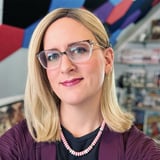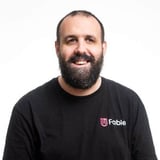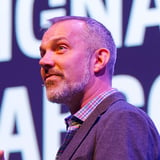Summary
Mark Interrante, the SVP of Engineering at Hewlett-Packard Enterprise, has an extensive history of building out design and product teams in technology. Listen as he shares tips and tools to improve collaboration between multi-disciplinary teams.
Key Insights
-
•
Organizational silos often manifest visibly in product design, reflecting internal boundaries rather than customer needs.
-
•
Bringing in external UX experts like Jakob Nielsen can reveal uncomfortable truths about organizational alignment.
-
•
Assuming positive intent when working across teams dramatically improves collaboration and conflict resolution.
-
•
Mapping horizontal workflows across teams helps identify bottlenecks, usually caused by delays and waiting time rather than workload.
-
•
Writing the fences — explicitly defining cross-team boundaries and interaction protocols — increases trust and collaboration between departments.
-
•
Small, incremental changes in team habits compound to transform culture much more effectively than large sweeping reforms.
-
•
Clarifying the deeper goals behind tasks using four simple outcome questions prevents wasted effort and uncovers better solutions.
-
•
A concise proposal framework (side-pav) that states situation, complication, position, action, and benefit dramatically increases approval rates for change initiatives.
-
•
Large organizations benefit from treating teams as having APIs—clear, documented interfaces for interaction and requests.
-
•
Focusing on optimizing workflow latency delivers far greater productivity returns than increasing work hours or additional headcount.
Notable Quotes
"You can see our organization through the homepage of our site — we each owned a rectangle."
"Culture is what you tolerate — if you tolerate rudeness or tardiness, it becomes part of who you are."
"Assume positive intent from their point of view — they’re trying to have a good day, not work against you."
"Up to 90% of time in work streams is delay or waiting time, not active work."
"If you want to get faster output, optimize the work and workflow first — not add more hours."
"We started to build an API for how other teams could interact with us like a contract."
"Use four simple questions to find out what people really want and why — it avoids misaligned efforts."
"Side-pav proposals answer what’s going on, why it matters now, what you propose, what action to take, and what benefit comes from it."
"Small micro changes every week add up — ask your team what tiny improvements they’ve made recently."
"Making issues visible, sharing models, and iterating versions of workflows helps uncover blockages and solutions."
Or choose a question:
















More Videos

"Business leaders are super busy, data-driven, competitive, and have a finely tuned bullshit meter."
Doug PowellClosing Keynote: Design at Scale
November 8, 2018

"Matching researchers by language and culture makes children more comfortable and improves consent."
Mila Kuznetsova Lucy DentonHow Lessons Learned from Our Youngest Users Can Help Us Evolve our Practices
March 9, 2022

"If we’re really centering it on people and experiences, consider life before place, and place before technology."
Sarah GallimoreInspire Progress with Artifacts from the Future
November 18, 2022

"If your users are happy, that anecdotal feedback often carries more weight early than quantitative metrics."
Lada Gorlenko Sharbani Dhar Sébastien Malo Rob Mitzel Ivana Ng Michal Anne RogondinoTheme 1: Discussion
January 8, 2024

"It is our job to lead and transform with empathy and heart because there’s fear in everyone."
Alnie FigueroaThe Future of Design Operations: Transforming Our Craft
September 10, 2025

"Research is not as easy as putting on a shoe and just doing it; it requires careful consideration and alignment with imperatives."
Landon BarnesAre My Research Findings Actually Meaningful?
March 10, 2022

"In public radio, your listener can’t rewind. We have to design for thoughtful user progression."
Emily EagleCan't Rewind: Radio and Retail
June 3, 2019

"Managing resistance is mental; customers might resist because they've learned workarounds with legacy systems."
Malini RaoLessons Learned from a 4-year Product Re-platforming Journey
June 9, 2021

"Designers are often seen as bottlenecks because our work is harder to estimate and track than engineering’s."
Asia HoePartnering with Product: A Journey from Junior to Senior Design
November 29, 2023
Latest Books All books
Dig deeper with the Rosenbot
What quality control workflows are recommended for overseeing democratized research initiatives?
How can service design and design ops collaborate intentionally to increase UX service capacity?
What are small steps teams can take to start making meaningful inclusive research without large-scale studies?
















